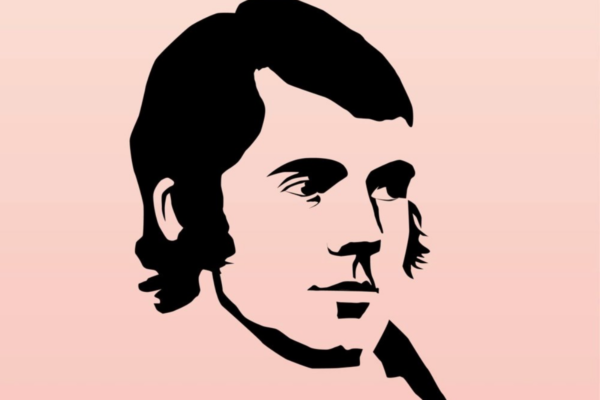The following poetry walks include ready-to-go walks, which are best enjoyed with headphones and, where feasible, an audio link to the poems. All of these options are available on Spotify and some are recited by the poets themselves. Other resources are available on the internet as well.
William Blake, London and Felpham, Sussex
Blake’s genius was never really realised in his own time. For the majority of his life, London was his unhappy home. Stroll along the Thames Path from Tate Britain to St Paul’s after viewing his paintings. Then cross the Millennium Bridge and travel to Bunhill Fields, where he is buried.
Blake moved to Felpham, near Bognor Regis, on the south coast, and lived in a cottage near the Fox inn, where he was happier for a while. The cottage, Hotham Park, and other monuments are all accessible via a short stroll. The property where Blake composed his most famous poem, about building paradise in England, is shuttered indefinitely while funds are raised for renovation. We can only hope that the great man would have understood the irony.
John Cooper Clarke, Salford
Few poets evoke where they’re from like John Cooper Clarke. Salford is perfectly encapsulated by his gruff but good-natured cynicism. For a poetry walk take the railway to Clifton in Manchester’s northwestern outskirts, then take the Salford Way long-distance footpath south along the Irwell’s banks to Salford Quays. After that head up Great Cheetham Street. Cooper Clarke’s roots are spread all over this area. He grew up on the corner of Bury New Road where he attended secondary school. Things were so tough he once joked the school had its own coroner.
Take a right and then another down Camp Street, the scene for his poem Beasley Street. It’s also the location for its follow-up Beasley Boulevard which takes a pop at the gentrification of the area. Grab a seat at one of the Quays’ cafes and search for other local alumni like Lemn Sissay, Longfella, JB Barrington and Mike Garry. After that visit an art gallery to observe how Laurence Stephen Lowry incorporated thousands of John Cooper Clarkes into his works.
Seamus Heaney, Bellaghy, County Derry
Heaney was born near Bellaghy, just a few kilometres from Lough Beg’s shores. Starting at the Seamus Heaney HomePlace in the hamlet, walk down to Poet’s Corner coffee shop. Turn right past Bellaghy Bawn to see The Turfman, a statue inspired by Heaney’s poem Digging. It’s a half mile down to Lough Beg, where you can walk along the beach on a boardwalk. In the summer, weather permitting, you can visit Church Island. It is claimed that it was visited by Saint Patrick on his journey down the River Bann and is mentioned in Seamus Heaney’s poem The Strand at Lough Beg. On your walk, download the Seamus Heaney HomePlace app and listen to his poems.
Carol Ann Duffy, Forest of Bowland and Pendle, Lancashire
The best poetry walk will combine outstanding language, beautiful scenery, and a good route. However, historical resonance also contributes to the experience. It’s a 48-mile journey from Sabden to Lancaster that passes through Pendle Hill and the Forest of Bowland. Duffy’s evocative poem is etched on ten posts along the way.
When you get to Lancaster, visit the castle where witches were tried. Then stroll half a mile onwards to The Golden Lion pub, where the unfortunate souls drank their final swig. Finally, make your way up Moor Lane to Golgotha, where they were hanged.
DH Lawrence, Eastwood, Nottinghamshire
Few poets join the exclusive club of those who have been banned. Lawrence is one of those who does. After being smuggled into Britain, his anthology Pansies was confiscated by the police in 1929 and had to be privately printed. It could be argued his best poetry is about nature, but not necessarily the British kind. On a trip through Lawrence’s hometown of Eastwood, you’ll be unlikely to find hummingbirds or kangaroos. But at least you’ll be able to marvel at the red brick streets.
Any poetry walk should begin at the DH Lawrence Birthplace Museum in the city centre. After that head to the many houses where he lived. Any walk should begin at the DH Lawrence Birthplace Museum in the city centre and go to the many houses where he lived. The Sun Inn features in both Sons and Lovers and Lady Chatterley’s Lover, so a pint there is a respectable literary goal. A two-mile extension to the walk takes you into High Park Wood. This runs across Moorgreen Reservoir, where Lawrence used to walk to see his close friend Jessie Chambers.
Philip Larkin, Hull
Philip Larkin is intimately tied to Hull. He described it in unfavourable terms but it has changed dramatically since Larkin’s time there. It is slowly recovering from the effects of being vandalised; first by the Luftwaffe and later by its own planning department.
Begin with a visit to the poet’s statue in the railway station, then make a stop at the Royal Station Hotel bar, which was a favourite venue of his. From there, take a stroll east to City Hall, a memorable feature of his poem Broadcast. You’ll pass many grand buildings, including Ferens Art Gallery, before heading off into the old town. Here is the famous Land of Green Ginger street and several pubs identifiable from his work. The trail comes to a close at Cottingham Cemetery, where Larkin was laid to rest.



